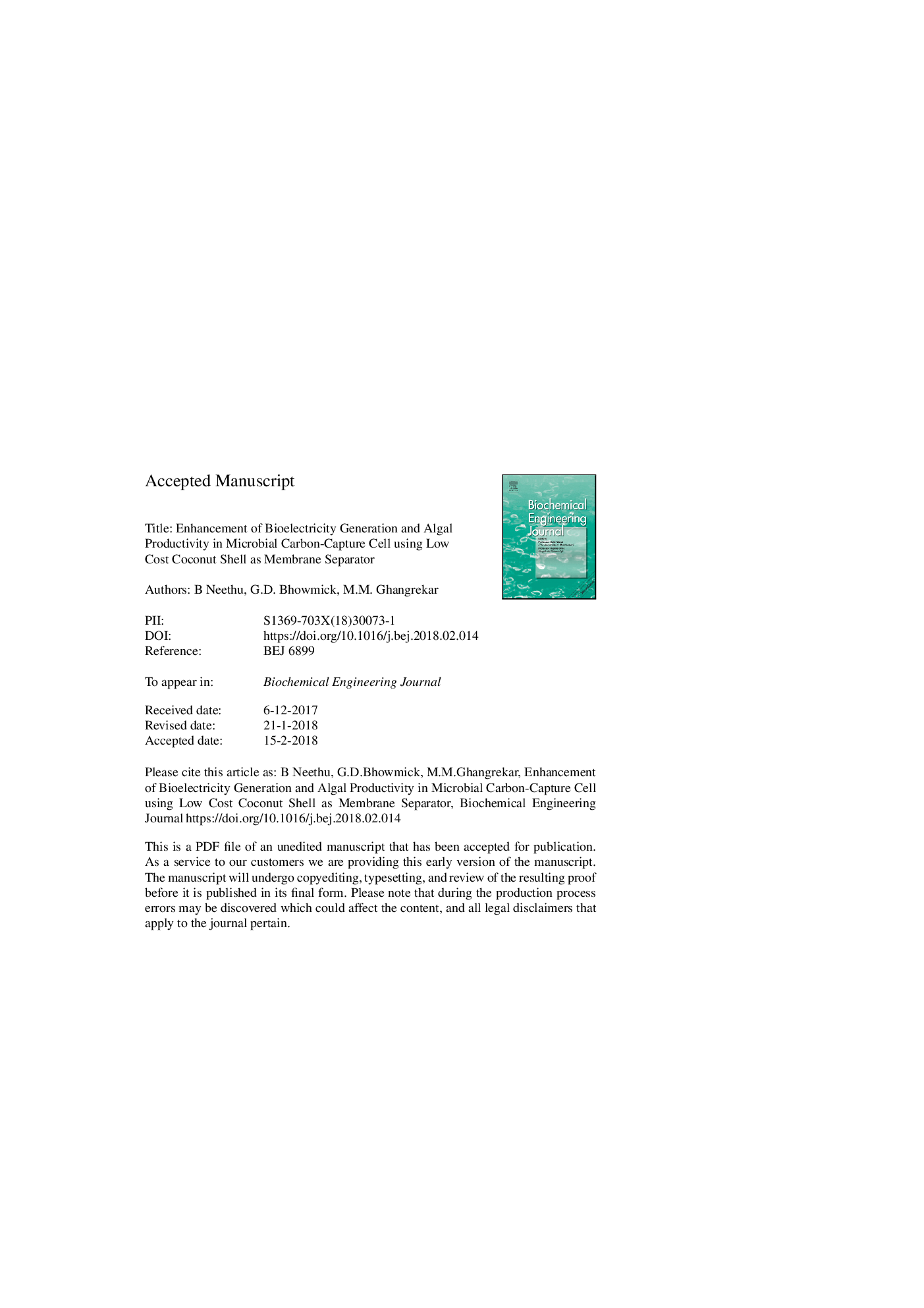| کد مقاله | کد نشریه | سال انتشار | مقاله انگلیسی | نسخه تمام متن |
|---|---|---|---|---|
| 6482242 | 1415982 | 2018 | 36 صفحه PDF | دانلود رایگان |
عنوان انگلیسی مقاله ISI
Enhancement of bioelectricity generation and algal productivity in microbial carbon-capture cell using low cost coconut shell as membrane separator
ترجمه فارسی عنوان
افزایش تولید زیستی الکتریکی و بهره وری جلبک در سلول های کربن میکروبی با استفاده از پوسته نارگیل کم هزینه به عنوان جداساز غشاء
دانلود مقاله + سفارش ترجمه
دانلود مقاله ISI انگلیسی
رایگان برای ایرانیان
کلمات کلیدی
پوسته نارگیل، میکرو جلبک، سلول های جذب کربن میکروبی، سلول های سوختی میکروبی، غشای تبادل پروتون،
موضوعات مرتبط
مهندسی و علوم پایه
مهندسی شیمی
بیو مهندسی (مهندسی زیستی)
چکیده انگلیسی
Proton exchange membranes (PEMs) are the most prominently used separator in microbial fuel cell (MFC) and microbial carbon capture cell (MCC). This study aims at evaluating the characteristics of coconut shell (CS) to explore its potential as a PEM. The CS exhibited superior water absorption (32%), which can stimulate the proton transmission through water molecules to the cathodic chamber. The proton conductivity of CS separator was comparable to Nafion 117; however, the oxygen mass transfer coefficient of CS separator was lower than Nafion 117, indicating it as superior separator. These separators were used in MCC with Chlorella sorokiniana grown in cathodic chamber. The maximum power density (MPD) and coulombic efficiency (CE) of MCC with CS separator were 3.2â¯W/m3 and 16.53%, respectively, whereas the MCC with Nafion 117 membrane showed a MPD of 1.8â¯W/m3 and CE of 8.42%. Although the COD removal efficiency in the anodic chamber of Nafion-MCC (72.14â¯Â±â¯0.15%) was superior to CS-MCC (65.97â¯Â±â¯0.83%), the algal specific growth rate at cathode was found better in CS-MCC (2.64â¯dayâ1) than Nafion-MCC (2.16â¯dayâ1). This study reveals the feasibility of using CS as low cost as well as energy efficient membrane separator for the application in MCC.
ناشر
Database: Elsevier - ScienceDirect (ساینس دایرکت)
Journal: Biochemical Engineering Journal - Volume 133, 15 May 2018, Pages 205-213
Journal: Biochemical Engineering Journal - Volume 133, 15 May 2018, Pages 205-213
نویسندگان
B. Neethu, G.D. Bhowmick, M.M. Ghangrekar,
